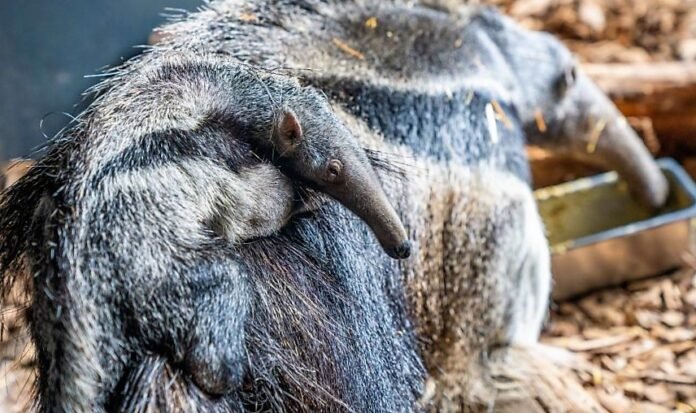The birth of a giant anteater at Chester Zoo has brought a glimmer of hope to a species that is categorized as vulnerable by the International Union for Conservation of Nature (IUCN) due to a sharp decline in population. This positive news has come as part of an international breeding programme to protect the species, which is facing a real risk of extinction.
Third Birth in 90 Years: A Promising Sign of Breeding Success
This unnamed pup marks the third giant anteater born at Chester Zoo since its inception in 1931, providing further evidence of the zoo’s success in breeding this rare and elusive species. The newborn was quick to clamber on to its mother’s back, where it will remain camouflaged in her fur for the next ten months, until it is mature enough to find food and roam on its own.
Giant Anteaters: A Species on the Brink of Extinction
Giant anteaters, indigenous to Central and South America, are now facing a critical situation with their population numbers dwindling in the wild. This species, capable of growing up to 2.1m (7ft) and weighing 50kg, is now in danger of extinction. The pup born on March 12, 2023, is currently 60cm long, but it will take time and effort to ensure its survival in the wild. As a result, conservation efforts are necessary to prevent its demise.
Conservation and Research: The Key to Survival
David White, Chester Zoo’s team manager, stated that the birth of this giant anteater is incredible news for the species, which is in danger of extinction. Conservation zoos such as Chester Zoo play a crucial role in preserving the species by providing a safety net population for them. Furthermore, these zoos raise awareness about the species and conduct research to learn more about them. Giant anteaters feed mostly on insects, consuming up to 30,000 ants or termites per day, using their sticky tongues that can reach up to two meters in length to feed. The baby is currently nursing on its mother’s milk and clinging to her back for around ten months, as it continues to grow.
Paul Bamford, Chester Zoo’s field conservation manager for South and Central America, emphasized that the zoo is working closely with its partners in Brazil, the Wild Animal Conservation Institute (ICAS), to conduct vital research on the impact of road deaths on giant anteaters over thousands of miles of roads. Habitat loss and traffic collisions are among the biggest threats to the survival of this species. By conducting research and raising awareness, Chester Zoo is working hard to ensure the survival of these incredible creatures.











